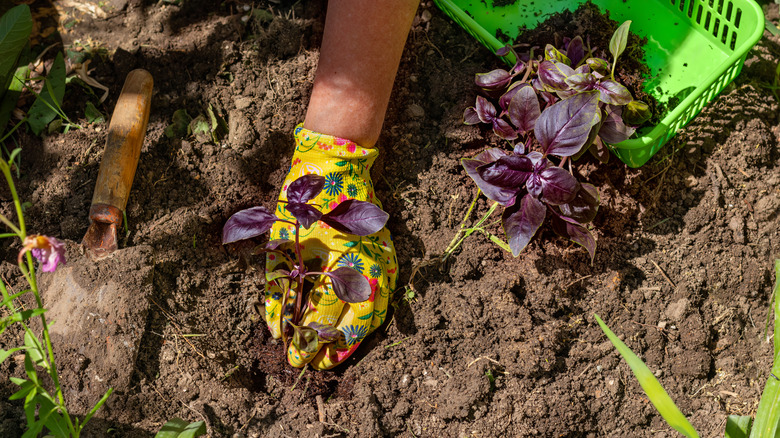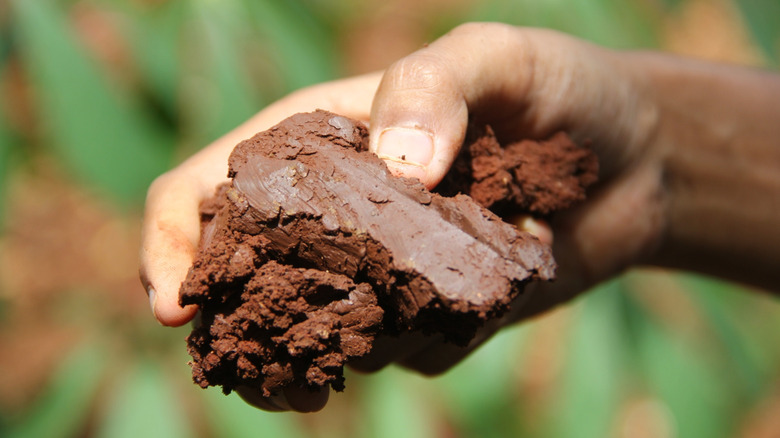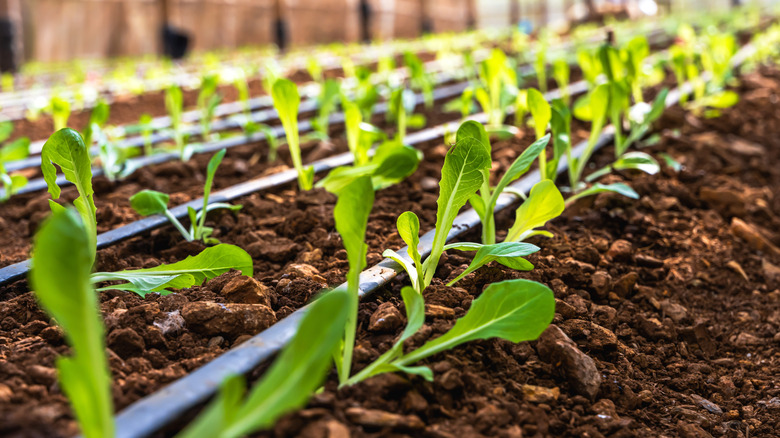The Essential Gardening Tip You Need To Ensure Your Plants Thrive In Clay Soil
We may receive a commission on purchases made from links.
Clay soil is often seen as a massive headache for gardening enthusiasts. It is messy for the tools (and the boots!), and shoveling and digging can easily turn into a full-body workout when the soil is too soggy. However, clay also gets a bad rep due to a basic lack of understanding. Considering the soil's inclination towards retaining moisture and nutrients, clay can easily become your best friend if you know how to work with it. So, what's the most crucial thing to keep in mind to make sure your plants stay happy and healthy in clay soil? You need to know how to water them the right way, which is deeply and slowly, once or twice a week.
Clay soil is drastically different from sand, loam, or silt — the other common varieties of garden soil. But, how do you identify if your garden soil is mostly clay? Well, besides the usual reddish color, telltale signs are often left on your tools. If you find that your soil clumps often, sticks to your shovels, and cracks when it dries, chances are you're working with clay.
Understanding clay soil and its relationship with water
The reason you need to pay extra attention when watering clay soil lies in its intricate structure. Clay is typically made of tiny particles that are tightly packed, with lots of 'nooks and crannies' which boost its Cation Exchange Capacity (a scientific term that indicates its nutrient retention ability and fertility). In short, clay has a tendency to retain both the good and the bad, like water and minerals, as well as salts.
Given this structure, the fact that clay soil is far more prone to the detriments of over-watering is a no-brainer. That's why you need to water it more deeply, but only after you have checked the soil moisture level to ensure it's dry. Pro tip: Next time you have the water hose in your hands, think of yourself much more as an artist than a warrior, slowly and thoughtfully moistening the soil. Watering less frequently will also help plants develop longer roots, thus enhancing their tolerance to drought.
Plenty of plant varieties are especially suited for this particular soil type. This includes geraniums, asters, bluestars, phlox, and a number of tasty veggies that will happily grow in clay soil. There are also numerous methods for improving heavy clay soil in your garden. However, you could easily sabotage your plants' health if you don't pay attention to their water requirements. Setting up a system that gradually waters your plants with the turn of a spout or the push of a button will help ensure success while gardening in clay soil.
Drip irrigation may be the best option for watering plants in clay soil
When it comes to clay, appearances can indeed be very deceptive. What looks dry on the surface can be dripping with moisture underneath. You can employ the 3-second rule to take the guesswork out of watering plants or rely on solid scientific grounds with a tool like the GROWIT Soil Moisture Meter, which determines whether your plants need a drink that day or not. You can also use the wide drip-irrigation method.
Drip irrigation is a system that makes use of a network of wide tubing fitted with drippers, allowing water to flow at much slower rates than, say, a sprinkler system. This feature makes it perfect for clay soil, as it facilitates slow water absorption and less run-off. The good news is that it is also completely convenient and affordable for gardeners to install this system for home use.
Besides minimizing water loss, there are also a number of other advantages that the drip irrigation (also called micro-irrigation) method offers. If you're constantly worrying about the state of your wood fences and house siding slowly deteriorating due to sprinklers' over-spray, drip-irrigation implies one less headache. Drip irrigation also comes in handy if your supply lines are restricted or corroded, since its volume requirement is far lower. You can also automate the system and adapt it in the future according to your gardening whims.


